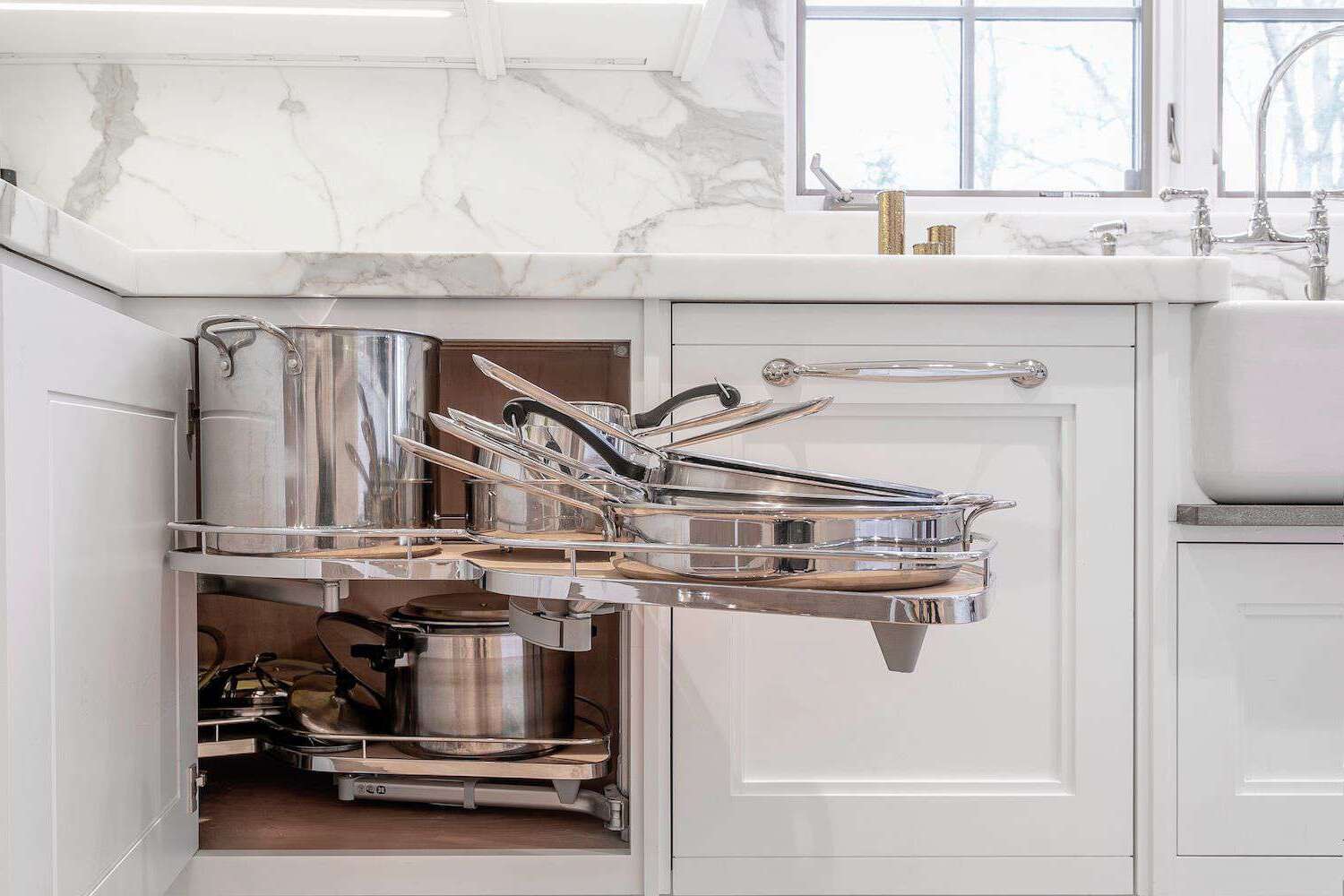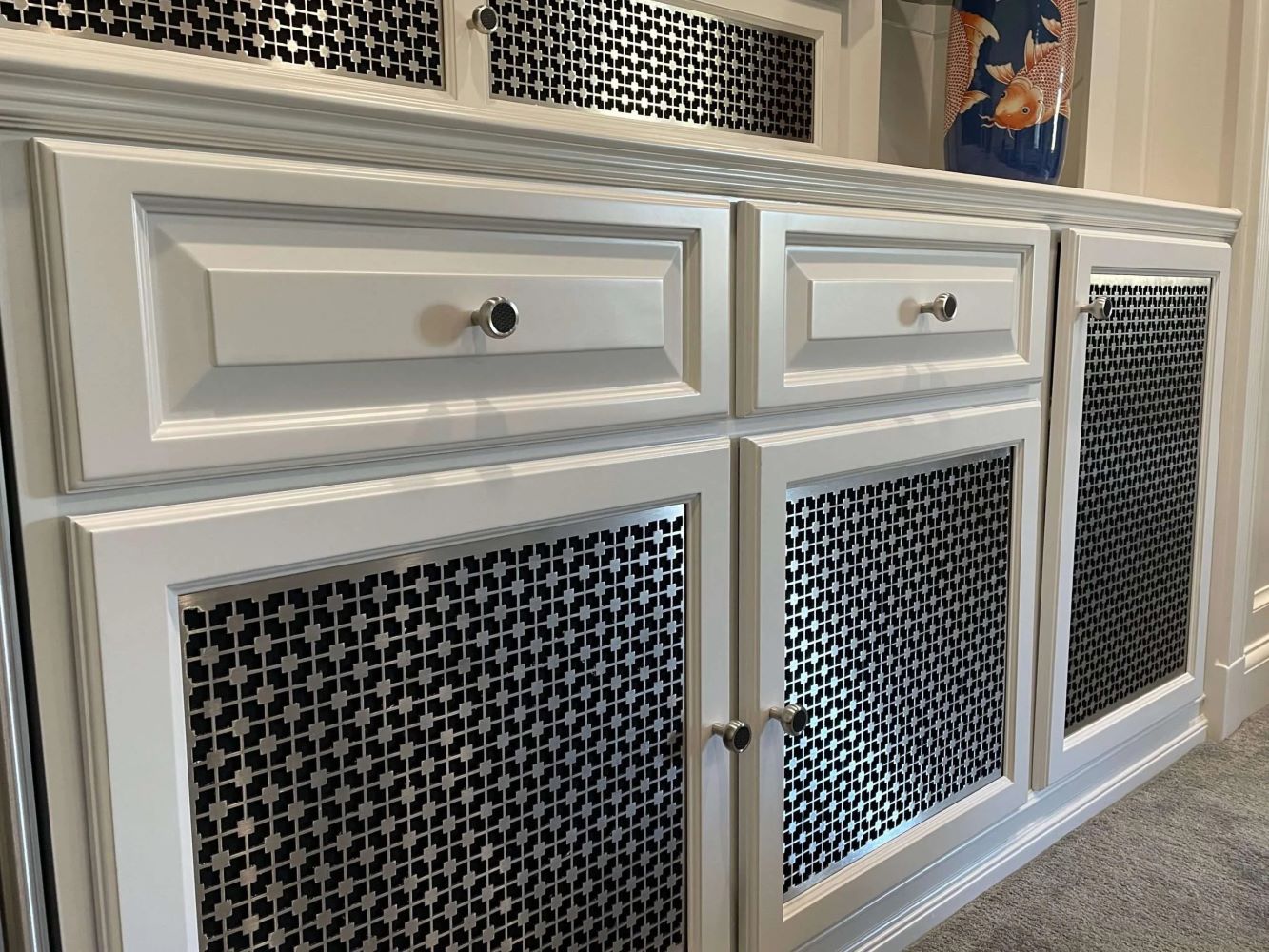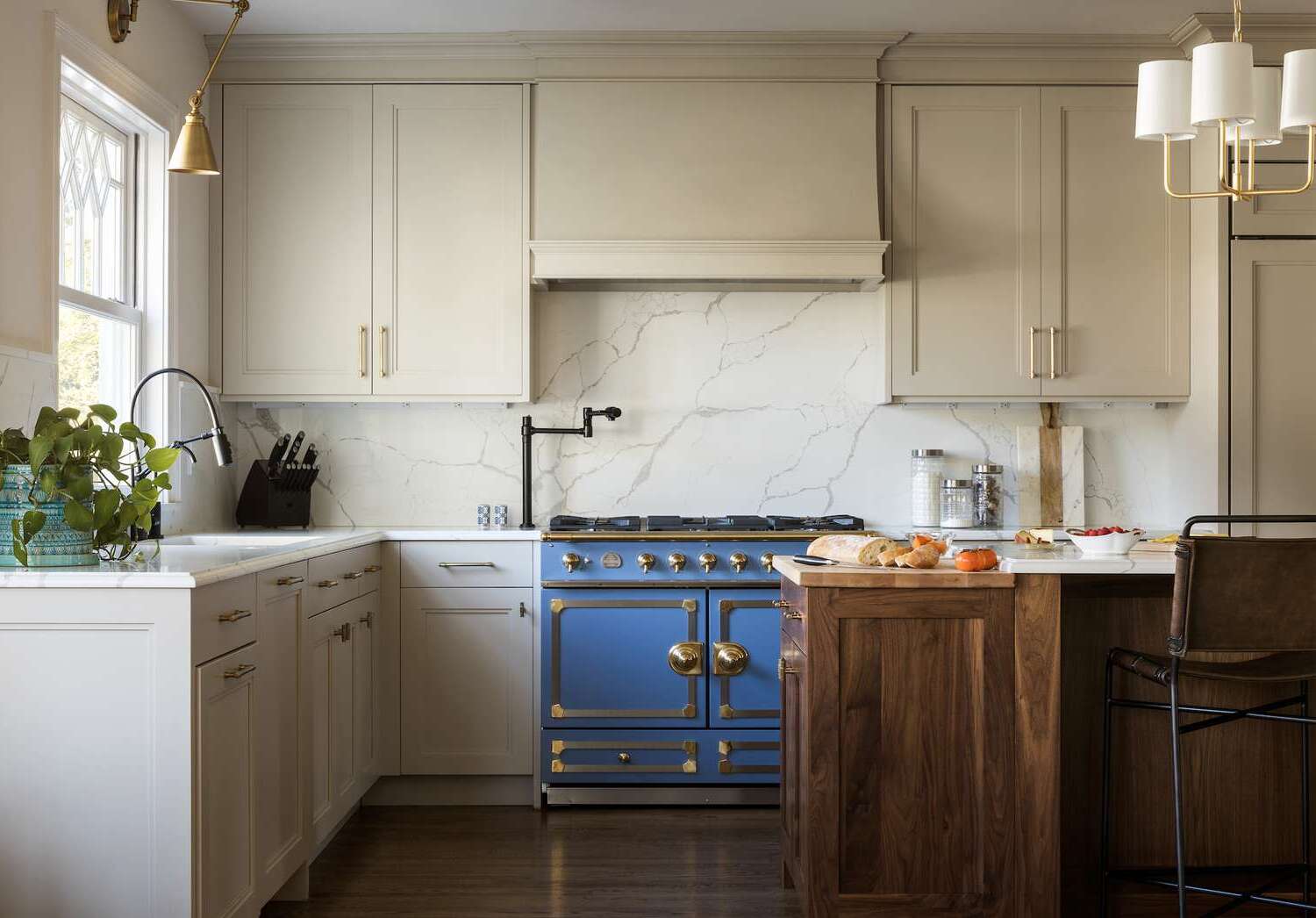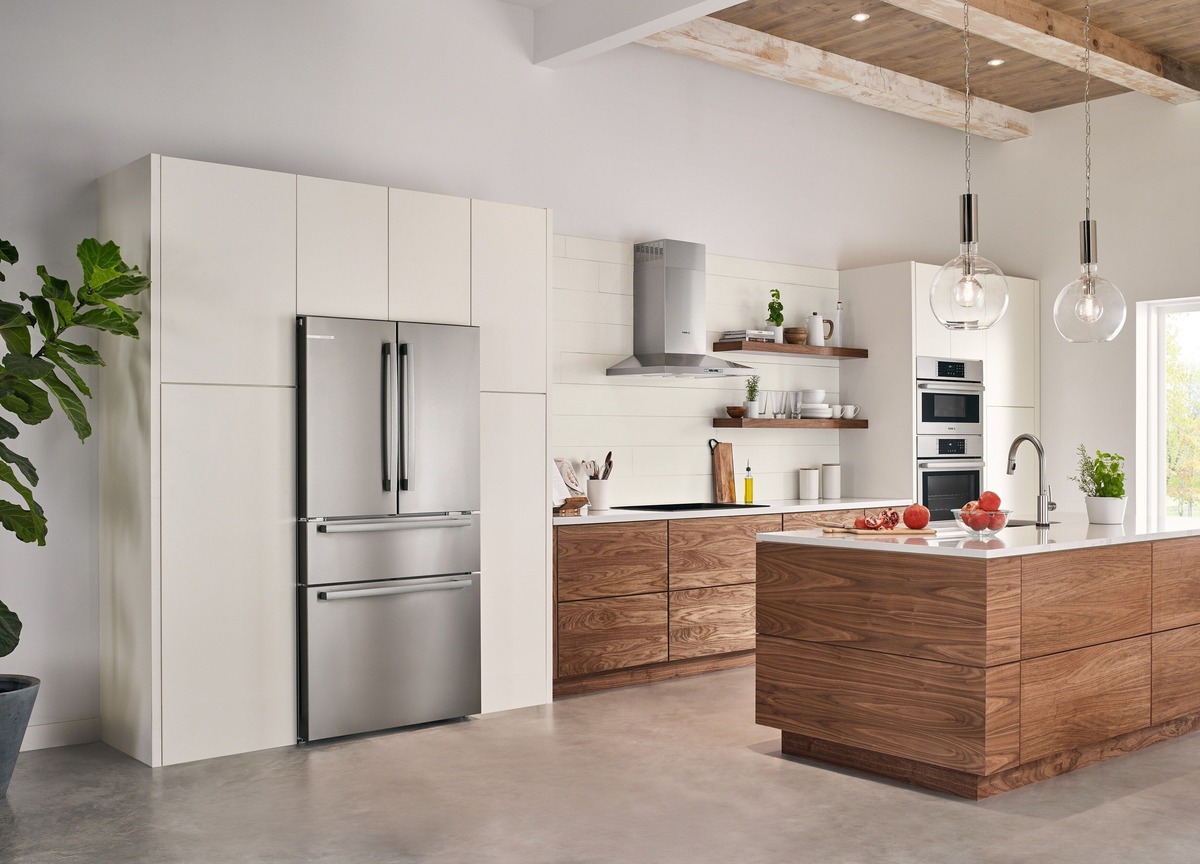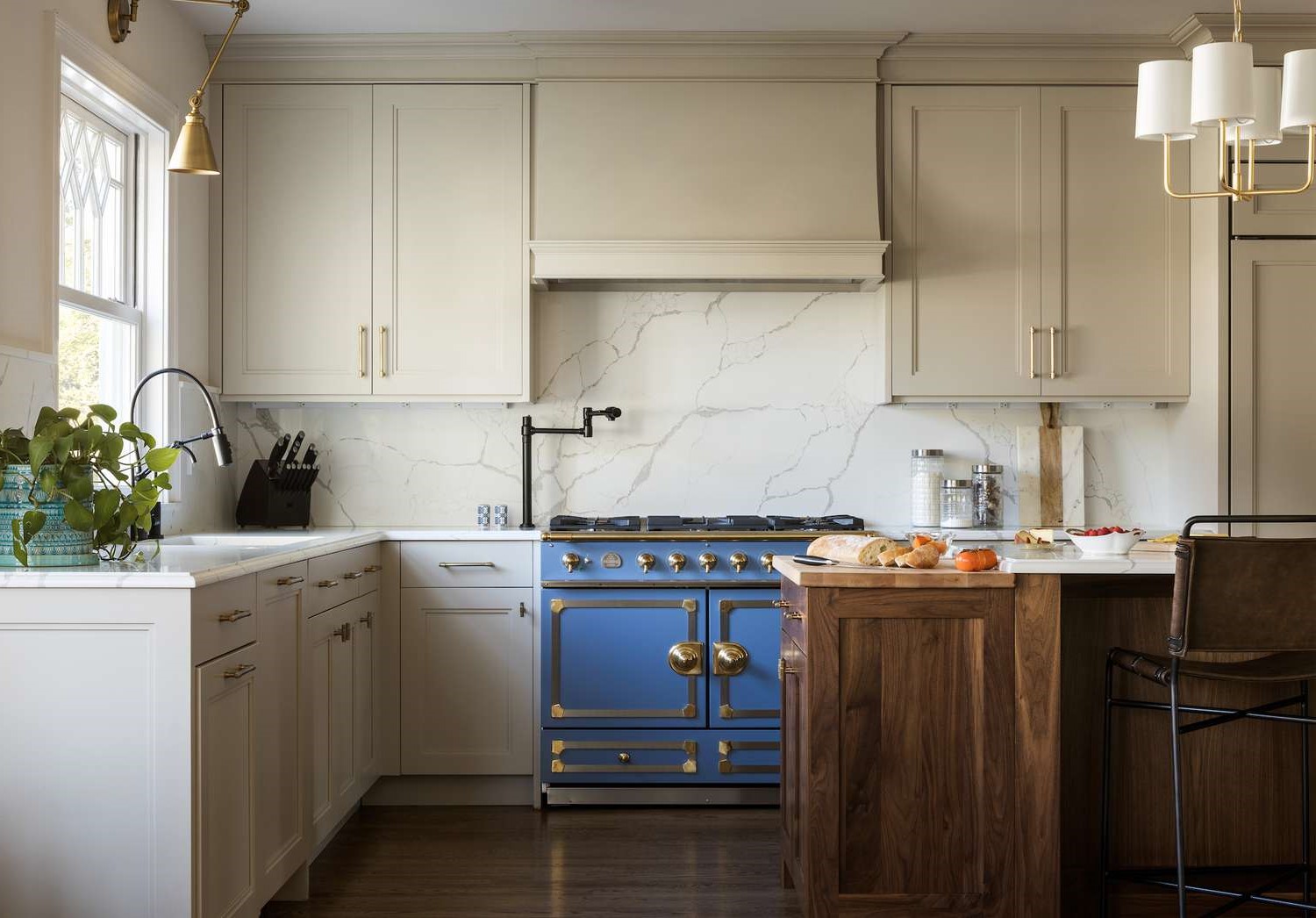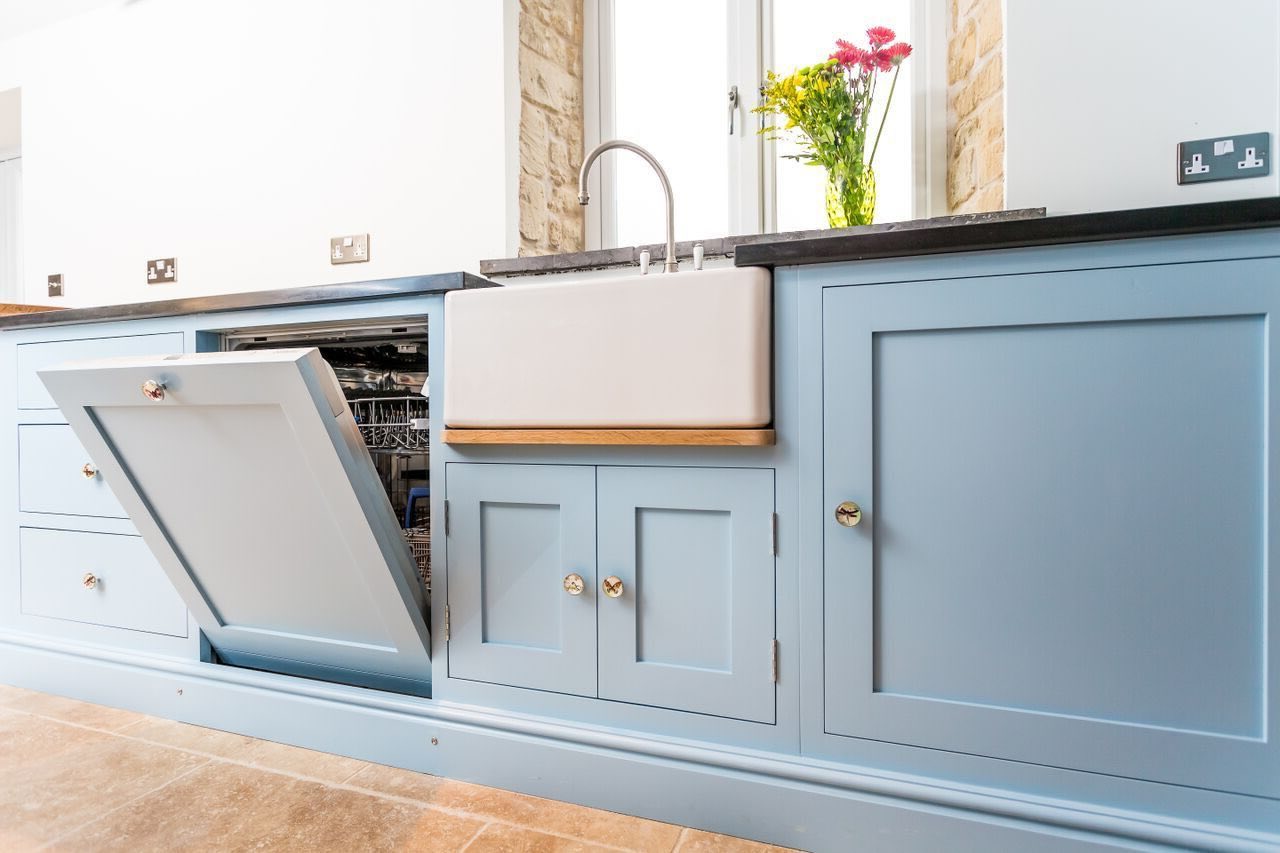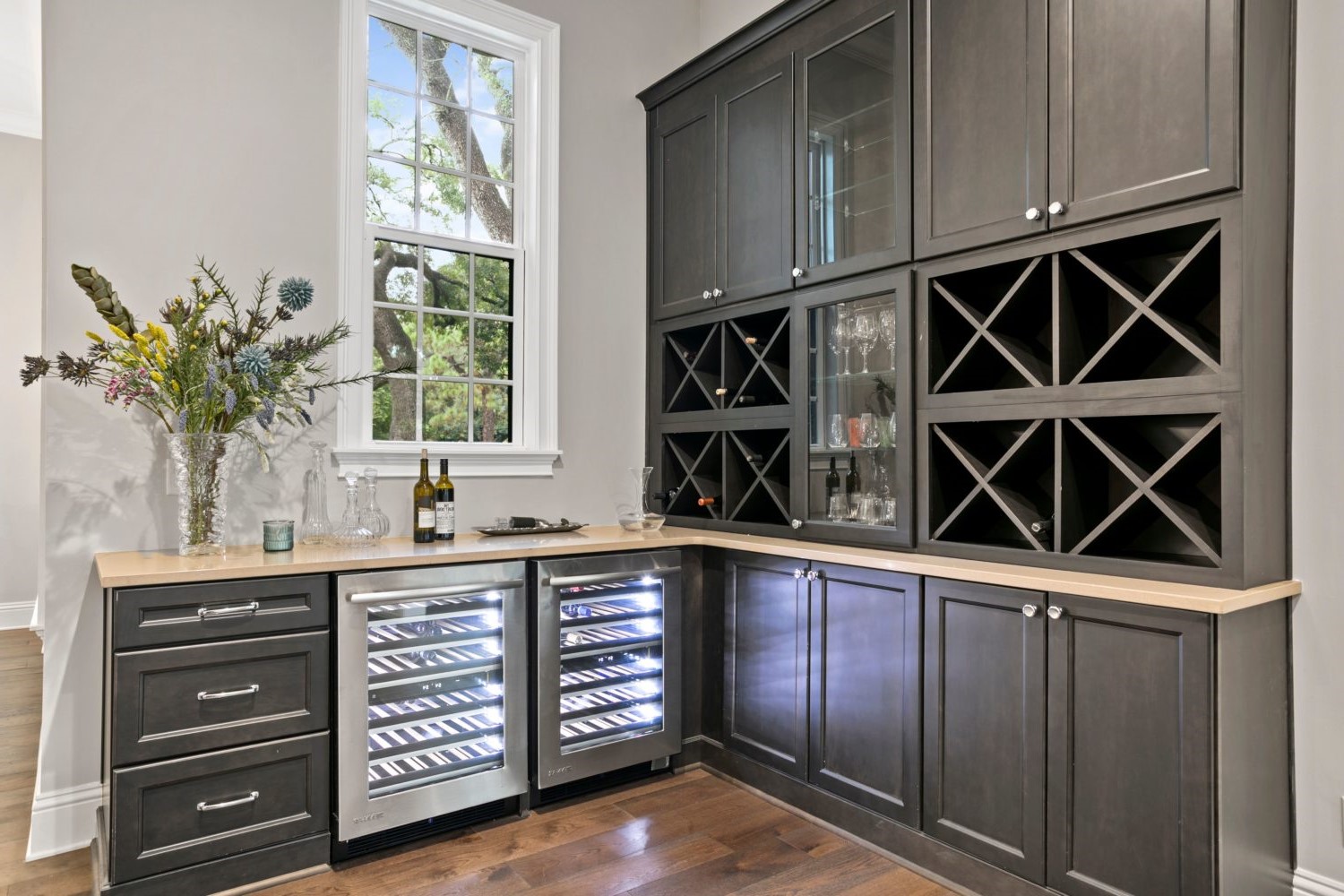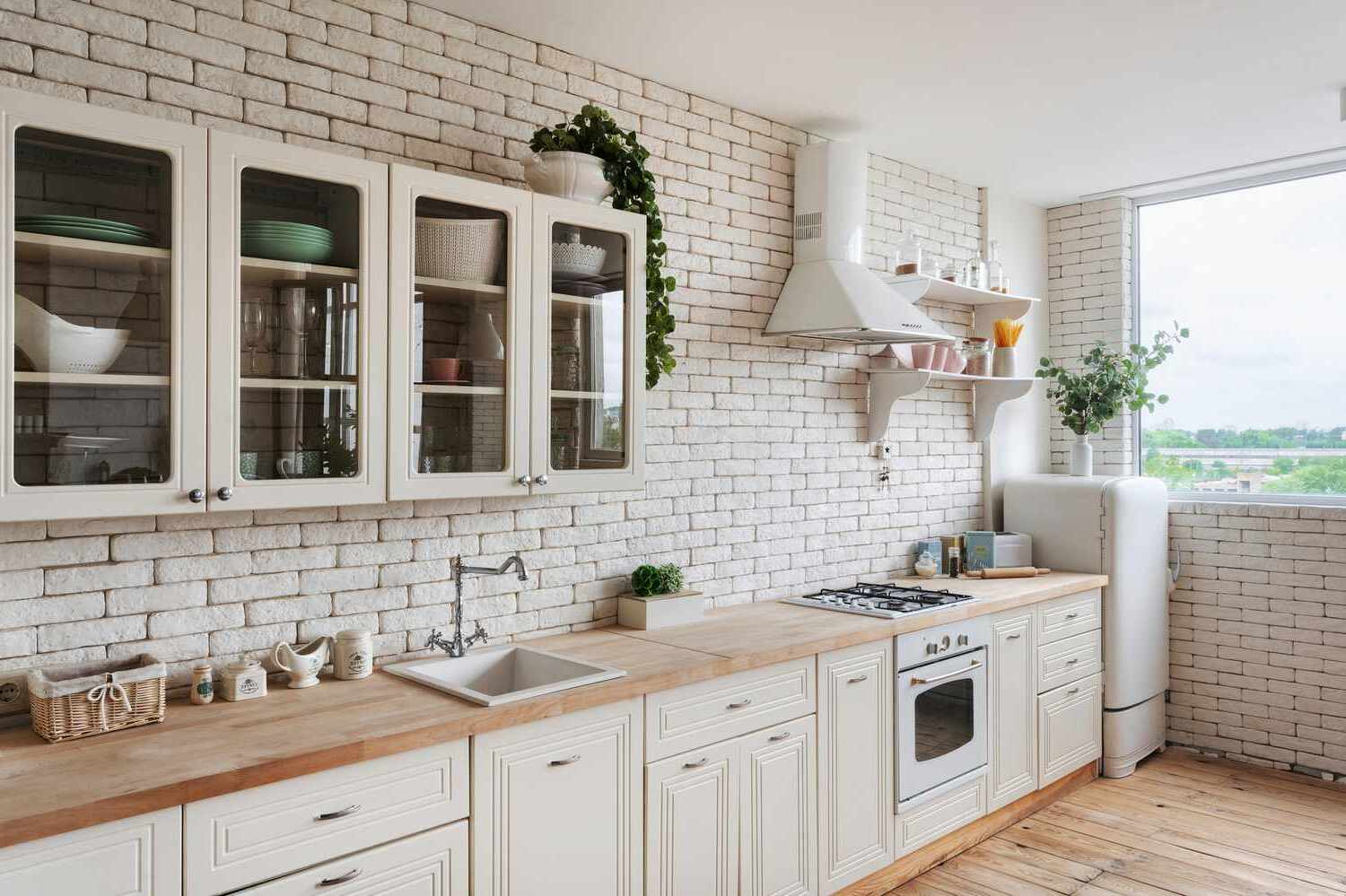Home>Knowledge & Skills>Wood & Metal Working>How To Build Cabinet Doors
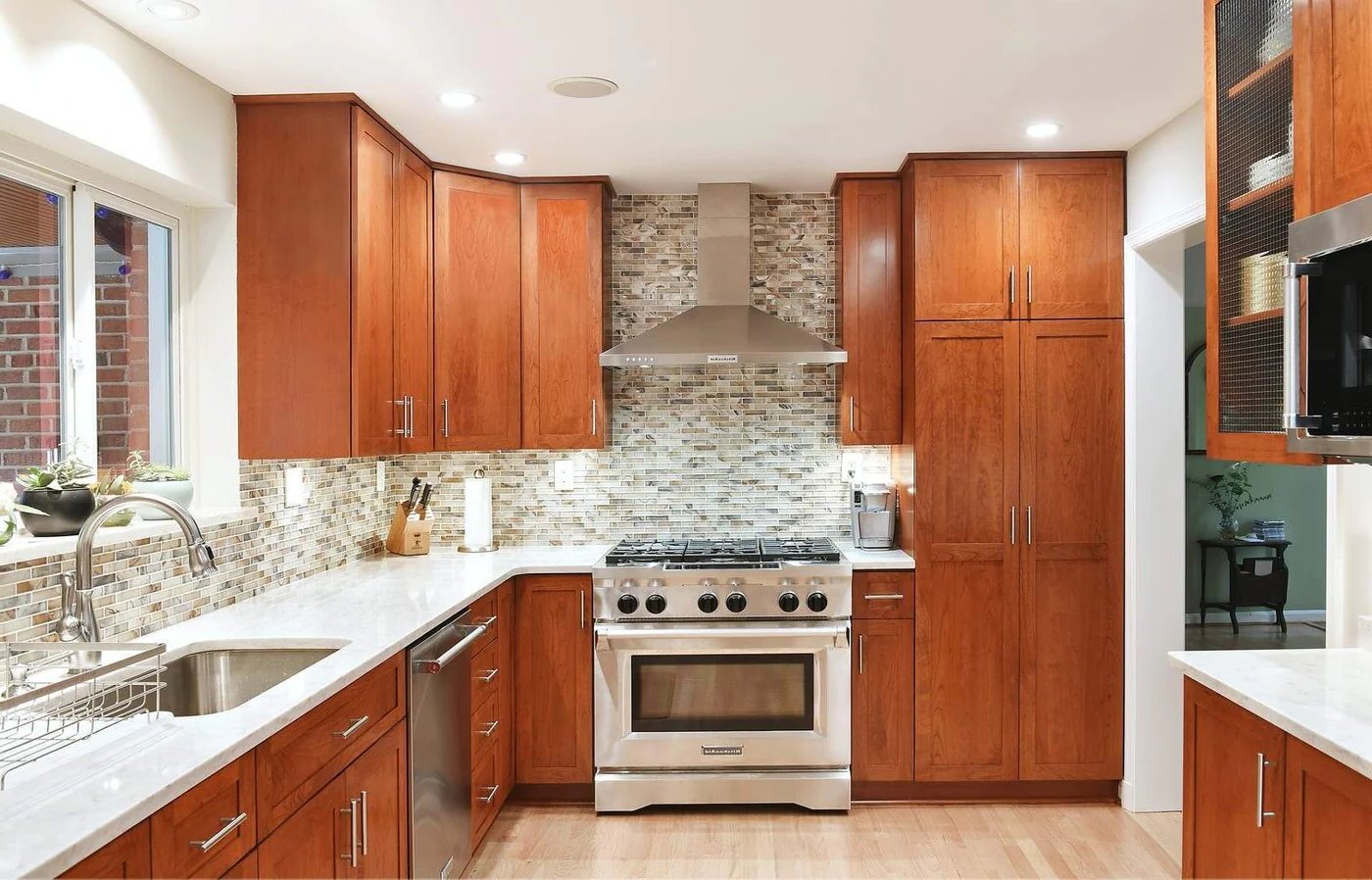

Wood & Metal Working
How To Build Cabinet Doors
Published: March 6, 2024

Our Editor-in-Chief brings a fresh perspective with his expertise in modern home technologies and eco-friendly solutions. Philip bridges tradition with innovation across a wide range of DIY topics.
Learn how to build cabinet doors using wood and metal working techniques. Discover step-by-step instructions and tips for creating custom cabinet doors.
(Many of the links in this article redirect to a specific reviewed product. Your purchase of these products through affiliate links helps to generate commission for Twigandthistle.com, at no extra cost. Learn more)
Introduction
Building cabinet doors is a rewarding and practical woodworking project that allows you to customize the look and functionality of your cabinets. Whether you are renovating your kitchen, bathroom, or any other space in your home, creating your own cabinet doors provides a sense of accomplishment and the opportunity to showcase your woodworking skills.
Crafting cabinet doors involves a blend of precision, creativity, and attention to detail. From selecting the right materials to mastering the joinery techniques, each step in the process contributes to the overall quality and durability of the finished product. By following a systematic approach and utilizing the appropriate tools and techniques, you can produce cabinet doors that seamlessly complement the design of your living space.
In this comprehensive guide, we will explore the step-by-step process of building cabinet doors from scratch. From measuring and cutting the wood to assembling the door components and adding the finishing touches, you will gain valuable insights into the craftsmanship involved in this woodworking endeavor. By the end of this guide, you will be equipped with the knowledge and confidence to embark on your own cabinet door building project, allowing you to elevate the aesthetic appeal and functionality of your cabinets.
So, roll up your sleeves, gather your woodworking tools, and let's delve into the art of creating custom cabinet doors that will add a touch of elegance and functionality to your living space.
Read more: How to Build DIY Cabinet Doors
Materials and Tools Needed
Before embarking on the journey of building cabinet doors, it's essential to gather the necessary materials and tools to ensure a smooth and efficient woodworking process. Here's a comprehensive list of the items you'll need to bring your cabinet door project to life:
Materials:
- Wood: Select high-quality wood that aligns with your design preferences and durability requirements. Common choices include oak, maple, cherry, and pine. Ensure that the wood is free from warping or defects to achieve a polished end result.
- Wood Glue: Opt for a reliable wood glue that provides strong adhesion and dries clear, facilitating seamless assembly of the door components.
- Sandpaper: Invest in a variety of sandpaper grits, including coarse, medium, and fine, to smoothen the wood surfaces and achieve a flawless finish.
- Finishing Materials: Choose a suitable finish for your cabinet doors, such as varnish, lacquer, or paint, to enhance the wood's natural beauty and protect it from wear and tear.
- Hinges and Hardware: Depending on your design preferences, select hinges, handles, and any additional hardware required for the functional and aesthetic aspects of the cabinet doors.
Tools:
- Table Saw: A table saw is essential for accurately cutting the wood to the required dimensions, ensuring precise and uniform door components.
- Miter Saw or Circular Saw: These saws are ideal for making angled cuts and crosscuts, allowing you to achieve clean and precise edges for the door frame and panels.
- Clamps: Quality clamps are indispensable for securing the wood during assembly, promoting tight and secure joints while the glue sets.
- Router: A router equipped with a suitable bit is essential for creating decorative edges and profiles on the cabinet door components, adding a touch of elegance to the finished product.
- Measuring Tools: Include a tape measure, combination square, and marking gauge to accurately measure and mark the wood for precise cuts and joinery.
- Drill and Bits: A drill, along with appropriate drill bits, is necessary for installing hinges, handles, and any additional hardware, ensuring seamless functionality of the cabinet doors.
- Sanding Blocks or Orbital Sander: These tools facilitate efficient and uniform sanding of the wood surfaces, preparing them for the finishing process.
By ensuring that you have the right materials and tools at your disposal, you can set the stage for a successful cabinet door building endeavor, allowing you to navigate the subsequent steps with confidence and precision.
Measuring and Cutting the Wood
Accurate measurements and precise cuts are fundamental to the construction of high-quality cabinet doors. Before diving into the cutting process, it's crucial to carefully measure the dimensions of the cabinet opening to determine the required door sizes. Start by measuring the height and width of the cabinet opening, accounting for any overlays or gaps based on the desired fit.
Once the measurements are obtained, transfer them to the selected wood, ensuring that each component is marked clearly and accurately. A combination square and marking gauge can be invaluable for achieving precise markings, allowing for consistent cuts and joinery. When marking the wood, it's essential to account for the width of the door frame components, such as stiles and rails, to ensure that the final dimensions align with the cabinet opening while accommodating the frame structure.
With the measurements and markings in place, it's time to proceed with the cutting phase. Utilizing a table saw equipped with a fine-toothed blade, carefully cut the wood according to the marked dimensions. It's advisable to make test cuts on scrap wood to verify the accuracy of the settings before cutting the actual door components. Additionally, using a miter saw or circular saw for angled cuts, if required, ensures clean and precise edges, contributing to the overall craftsmanship of the cabinet doors.
As each component is cut, it's essential to label them accordingly to avoid confusion during the assembly stage. Proper labeling helps maintain organization and streamlines the subsequent steps of the cabinet door construction process. Moreover, double-checking the dimensions and ensuring uniformity across all components is crucial for achieving a cohesive and professional end result.
In summary, meticulous attention to detail during the measuring and cutting phase sets the foundation for well-crafted cabinet doors. By prioritizing precision and accuracy at this stage, woodworkers can proceed to the assembly and finishing stages with confidence, knowing that the door components are tailored to fit seamlessly within the cabinet framework.
Read more: How to Build Sliding Cabinet Doors
Assembling the Cabinet Door
With the individual components of the cabinet door cut to precision, the assembly phase marks a pivotal stage in bringing the project to fruition. The assembly process involves joining the stiles, rails, and panels to form a cohesive and sturdy door structure. Here's a detailed walkthrough of the steps involved in assembling the cabinet door:
-
Dry Fit and Alignment: Before applying any adhesive, conduct a dry fit of the door components to ensure that they align seamlessly. This step allows for any necessary adjustments to be made before the assembly is finalized. Pay close attention to the alignment of the stiles and rails, as well as the placement of the panels within the frame structure.
-
Application of Wood Glue: Once the dry fit confirms the precise alignment of the components, apply a high-quality wood glue to the joining surfaces. It's essential to spread the glue evenly to promote strong adhesion and ensure a durable bond between the components. Additionally, using a brush or roller can aid in achieving uniform coverage of the glue.
-
Clamping and Securing: With the glue applied, carefully position the components together, ensuring that the joints are tight and the surfaces are flush. Utilize quality clamps to secure the assembly, exerting sufficient pressure to promote a strong bond while preventing any shifting of the components. It's advisable to place scrap wood pads between the clamps and the door components to avoid leaving marks on the wood surfaces.
-
Verification of Squareness: As the clamps hold the assembly in place, verify the squareness of the door using a carpenter's square. This step is crucial for ensuring that the door maintains a perfectly square shape, which is essential for proper fit and functionality within the cabinet framework.
-
Drying and Curing: Allow sufficient time for the wood glue to dry and cure as per the manufacturer's recommendations. It's important to exercise patience during this phase to ensure that the adhesive sets completely, establishing a robust bond between the door components.
-
Panel Retention: If the cabinet door features panels within the frame, ensure that the panels are retained securely. Depending on the design, this may involve the use of panel retainers or other appropriate methods to maintain the stability and integrity of the panels within the door structure.
By meticulously following these steps, woodworkers can achieve a well-constructed and visually appealing cabinet door assembly. The careful application of wood glue, precise alignment, and strategic clamping contribute to the creation of a durable and aesthetically pleasing door that will enhance the functionality and visual appeal of the cabinets.
This meticulous approach to assembling cabinet doors sets the stage for the subsequent phases of adding hinges and hardware, as well as the sanding and finishing processes, ultimately culminating in the creation of custom cabinet doors that reflect craftsmanship and attention to detail.
Adding Hinges and Hardware
Once the cabinet door assembly is complete, the next crucial step is the installation of hinges and hardware. This phase not only contributes to the functionality of the cabinet doors but also adds a touch of personalization and style to the overall design. Here's a detailed overview of the process involved in adding hinges and hardware to the cabinet doors:
Hinge Selection:
Carefully select hinges that align with the design and functionality requirements of the cabinet doors. Common options include butt hinges, concealed hinges, and European hinges, each offering distinct features and installation methods. Consider factors such as door overlay, opening angle, and adjustability when choosing the most suitable hinges for the project.
Marking and Preparing:
Begin by marking the precise locations for the hinges on the cabinet door and the corresponding cabinet frame. Utilize a marking gauge and a pencil to ensure accurate placement of the hinge mortises or screw holes. For concealed hinges, follow the manufacturer's guidelines for marking and preparing the door and frame to accommodate the hinge mechanisms.
Read more: How to Build Glass Cabinet Doors
Mortising and Drilling:
If using traditional hinges, carefully mortise the door and frame to recess the hinge plates, ensuring a flush and seamless fit. For concealed hinges, utilize a specialized hinge boring bit or a drilling template to create the necessary cup recesses in the door and frame. Exercise caution and precision during this step to achieve clean and accurate mortises and drill holes.
Attaching the Hinges:
With the mortises and drill holes in place, proceed to attach the hinges to the cabinet door and frame using the appropriate screws. Ensure that the hinges are aligned correctly and securely fastened to facilitate smooth operation and longevity. For concealed hinges, follow the specific instructions provided by the manufacturer to ensure proper installation and adjustment.
Hardware Installation:
In addition to hinges, the installation of handles, knobs, or pulls contributes to the aesthetic appeal and functionality of the cabinet doors. Select hardware that complements the overall design scheme and aligns with ergonomic considerations. Utilize a template or marking tool to establish consistent placement of the hardware, ensuring a uniform and visually pleasing appearance.
By meticulously following these steps, woodworkers can seamlessly integrate hinges and hardware into the cabinet doors, enhancing both the visual appeal and practical functionality of the finished product. The careful selection, precise installation, and attention to detail during this phase contribute to the overall craftsmanship and quality of the custom-built cabinet doors.
This meticulous approach to adding hinges and hardware sets the stage for the subsequent phases of sanding and finishing, ultimately culminating in the creation of custom cabinet doors that reflect precision, functionality, and aesthetic appeal.
Sanding and Finishing
Sanding and finishing are pivotal stages in the cabinet door building process, contributing to the refinement, durability, and visual appeal of the final product. This phase involves meticulous surface preparation, the application of finishes, and the enhancement of the wood's natural characteristics. Here's a detailed exploration of the steps involved in sanding and finishing cabinet doors:
Read more: How to Build a DIY Barn Door Cabinet
Surface Preparation:
Commence the sanding process by using coarse-grit sandpaper to remove any surface imperfections, irregularities, or mill marks from the wood. This initial sanding stage sets the foundation for achieving a smooth and uniform surface, preparing the wood for subsequent finishing applications. It's essential to sand in the direction of the wood grain to avoid creating visible scratches or blemishes.
Gradual Smoothening:
Progressively transition to finer grit sandpapers, such as medium and fine grits, to further smoothen the wood surfaces and eliminate any remaining roughness or inconsistencies. Each sanding progression contributes to the refinement of the wood, resulting in a tactilely pleasing and visually appealing finish. Pay close attention to detail during this phase, ensuring that all surfaces, including edges and profiles, receive uniform sanding treatment.
Removal of Sanding Residues:
Following the sanding process, thoroughly remove any sanding residues, dust, and debris from the wood surfaces. Utilize a clean, dry cloth or a tack cloth to wipe down the doors, ensuring that the surfaces are free from any particles that could compromise the quality of the finish. This meticulous cleaning step sets the stage for the application of the chosen finish, promoting optimal adhesion and a flawless end result.
Application of Finish:
Select a suitable finish, such as varnish, lacquer, or paint, based on the desired aesthetic and protective qualities for the cabinet doors. Apply the finish evenly and consistently using a brush, roller, or sprayer, ensuring complete coverage of the wood surfaces. It's important to follow the manufacturer's recommendations regarding application techniques, drying times, and the number of coats required to achieve the desired finish quality.
Read more: How to Build Built-In Cabinets
Curing and Inspection:
Allow the applied finish to dry and cure according to the specified duration, providing an optimal environment for the finish to set and harden. Once the finish has cured, inspect the cabinet doors for uniformity, smoothness, and adherence of the finish. Address any imperfections or irregularities by lightly sanding the surfaces and applying additional coats of finish as needed to achieve the desired visual and tactile qualities.
Final Polishing:
For a lustrous and refined appearance, consider polishing the finished cabinet doors using a suitable polishing compound or wax. This final step enhances the sheen and smoothness of the finish, elevating the visual appeal of the wood and providing an additional layer of protection against daily wear and tear.
By meticulously following these steps, woodworkers can achieve impeccably finished cabinet doors that showcase the natural beauty of the wood while offering enhanced durability and longevity. The combination of precise sanding techniques and the application of quality finishes culminates in the creation of custom cabinet doors that exude craftsmanship and sophistication.
This meticulous approach to sanding and finishing sets the stage for the completion of the cabinet door building process, resulting in bespoke doors that seamlessly integrate with the overall design of the living space while standing the test of time.
Conclusion
In conclusion, the process of building custom cabinet doors encompasses a blend of precision, craftsmanship, and attention to detail. From the initial selection of high-quality wood to the final touches of sanding and finishing, each step contributes to the creation of bespoke doors that elevate the aesthetic appeal and functionality of cabinets within living spaces.
The journey begins with the careful measurement and cutting of the wood, where meticulous attention to detail sets the stage for the subsequent phases of assembly, hardware integration, and finishing. The assembly of the cabinet doors involves the strategic application of wood glue, precise alignment, and secure clamping, culminating in the formation of sturdy and visually appealing door structures.
The addition of hinges and hardware further enhances the functionality and personalization of the cabinet doors, allowing for seamless integration within the cabinet framework. The selection of suitable hinges, precise installation, and thoughtful hardware placement contribute to the overall cohesiveness and practicality of the finished doors.
Sanding and finishing represent the transformative phases that refine the wood surfaces, accentuate the natural characteristics of the wood, and provide protection against daily wear and tear. The meticulous progression from coarse to fine grit sanding, coupled with the application of quality finishes, results in cabinet doors that exude a tactilely pleasing and visually captivating allure.
Ultimately, the art of building cabinet doors transcends the realm of woodworking, embodying the fusion of functionality and artistry. The culmination of this process yields custom doors that not only serve as functional elements within living spaces but also stand as testaments to the craftsmanship and dedication of the woodworker.
As woodworking enthusiasts embark on their cabinet door building endeavors, embracing the principles of precision, patience, and creativity will undoubtedly lead to the creation of doors that seamlessly integrate with the design vision of the space while embodying the enduring charm of handcrafted woodworking.
In essence, the journey of building custom cabinet doors is a testament to the timeless allure of woodworking, where each step in the process contributes to the creation of functional, visually captivating, and enduring elements within living spaces.

